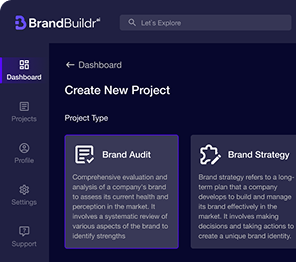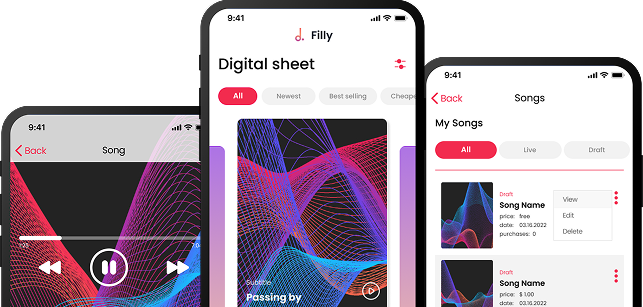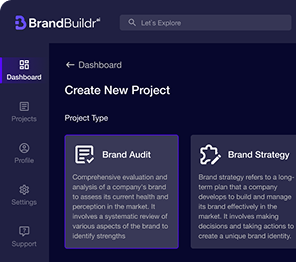Digital product design has evolved from a purely aesthetic consideration to become a critical business function that directly influences customer acquisition, retention, and ultimately, revenue generation. The numbers speak volumes: companies that implement top design practices grow twice as fast as the industry benchmark growth rate, while every dollar invested in user experience design delivers an average return of $100.
The modern business environment demands sophisticated UI/UX design services that can handle complex workflows, integrate seamlessly with multiple systems, and provide exceptional user experiences across various devices and platforms. This complexity translates directly into market differentiation and financial performance, making strategic design investment essential for sustainable competitive advantage.
The convergence of user expectations, technological capabilities, and market dynamics has created an environment where thoughtful design strategy becomes a primary determinant of business success. Organizations that understand and implement revenue-driven design principles consistently outperform their competitors, achieving higher customer satisfaction scores, improved retention rates, and increased market share. According to Human Factors International, Staples increased their online revenue by 500% after its UX-focused site redesign.
%20(1).png)
Why Digital Product Design Is Crucial for Business Success
Digital product design serves as the foundation upon which successful user experiences are built, directly impacting customer satisfaction, engagement, and loyalty metrics that translate into measurable revenue growth. The discipline encompasses far more than visual aesthetics; it represents a systematic approach to problem-solving that addresses user pain points while advancing business objectives through thoughtful interface design, intuitive user flows, and strategic feature prioritization.
Modern digital product design integrates user research, behavioral psychology, and business strategy to create products that resonate with target audiences and drive sustainable growth. The business impact of strategic design extends beyond immediate user satisfaction to encompass long-term competitive positioning and market differentiation. Organizations that prioritize design thinking in their product development processes demonstrate superior performance across multiple key performance indicators, including:
- Customer acquisition costs
- Customer lifetime value
- Retention rates
Product development and design strategies that emphasize user-centric approaches consistently deliver better market outcomes, with companies like Apple, Airbnb, and Netflix serving as prime examples of design-driven business success.
The relationship between design quality and business performance becomes particularly evident when examining conversion rates, user engagement metrics, and customer feedback scores. Well-designed digital products facilitate smoother user journeys, reduce friction in critical interactions, and create positive emotional connections that foster brand loyalty. This emotional resonance translates directly into business value through increased purchase likelihood, positive word-of-mouth referrals, and reduced customer churn rates.
The Impact of Good Design on Customer Experience and Business Growth
Exceptional digital product design creates a cascade of positive effects that amplify throughout the customer journey, beginning with first impressions and extending through long-term brand relationships. User experience design directly influences key business metrics, with research demonstrating that companies focusing on customer experience improvements see a 42% improvement in customer retention, a 33% improvement in customer satisfaction, and a 32% increase in cross-selling and up-selling opportunities. These improvements stem from design's ability to reduce cognitive load, eliminate user frustration, and create intuitive pathways that guide users toward desired actions.
The impact of design excellence on customer behavior manifests in measurable ways that directly affect revenue generation.
Well-designed interfaces can triple website conversion rates, while strategic UX improvements can raise conversion rates by up to 400%.
These dramatic improvements result from design's ability to address user pain points, streamline complex processes, and create compelling calls to action that resonate with target audiences. Additionally, 94% of consumers prioritize easy navigation as the most important feature in digital platforms, while 83% consider beautiful and updated UX design essential.
Digital product design excellence also creates powerful network effects that amplify business growth through organic customer acquisition channels. Satisfied users become brand advocates, generating positive reviews, social media mentions, and referral traffic that reduces customer acquisition costs while increasing conversion rates. Research shows:
%20(1)%20(1).png)
- 60% of consumers will become repeat buyers after a personalized purchasing experience
- 66% are willing to share personal data if they believe it will elevate their customer experience
Key Benefits of a Revenue-Driven Digital Product Design Strategy
A revenue-driven digital product design strategy aligns design decisions with specific business outcomes, ensuring that every design element contributes to measurable financial objectives. This approach prioritizes features and improvements based on their potential impact on key revenue metrics, including conversion rates, average transaction values, customer lifetime value, and retention rates.
Revenue-driven product design strategies focus on understanding user behavior patterns that correlate with purchasing decisions, optimizing these pathways to maximize business impact while delivering superior user experiences.
The implementation of revenue-focused design principles yields tangible benefits across multiple dimensions of business performance. Organizations that adopt this approach typically see significant improvements in customer acquisition efficiency, with better-designed products requiring lower marketing investments to achieve comparable user adoption rates. Additionally, revenue-driven design strategies emphasize features that encourage repeat usage and long-term engagement, resulting in higher customer lifetime values and improved unit economics.
Strategic design investments also create sustainable competitive advantages that are difficult for competitors to replicate. While features and pricing can be easily copied, exceptional user experience requires:
- Deep understanding of user needs
- Sophisticated design capabilities
- Ongoing optimization efforts that create meaningful barriers to entry
This competitive moat becomes particularly valuable in saturated markets where functional differentiation is minimal and user experience becomes the primary differentiator.
Key Elements of a Successful Digital Product Design Strategy
A comprehensive digital product design strategy integrates multiple interconnected elements that work synergistically to create exceptional user experiences while driving business objectives. Successful product design principles encompass:
- User research methodologies
- User experience design frameworks
- User interface design standards
- Brand integration guidelines
- Usability testing protocols
These elements must be carefully orchestrated to align with broader business strategies while maintaining focus on user needs and expectations.
The foundation of effective design strategy lies in establishing clear connections between design decisions and business outcomes, ensuring that every design choice can be justified through its contribution to revenue growth, customer satisfaction, or operational efficiency. This alignment requires sophisticated understanding of:
- User behavior patterns
- Market dynamics
- Competitive landscapes
Organizations must develop systematic approaches for evaluating design alternatives, measuring design effectiveness, and optimizing design elements based on performance data.
Strategic design frameworks also emphasize scalability and consistency, ensuring that design systems can accommodate business growth while maintaining coherent user experiences across expanding product portfolios. This requires careful attention to:
- Design system architecture
- Component libraries
- Style guides

Understanding Your Target Audience: The Role of User Research
User research serves as the cornerstone of effective digital product design, providing crucial insights into user needs, behaviors, motivations, and pain points that inform design decisions and strategic priorities. Comprehensive user research encompasses multiple methodologies, including:
%20(1)%20(1).png)
- User interviews
- Surveys
- Usability testing
- Behavioral analytics
- Competitive analysis
This research foundation ensures that design decisions are grounded in empirical evidence rather than assumptions, significantly increasing the likelihood of market success.
The research process begins with identifying key user segments and understanding their unique characteristics, preferences, and usage patterns that influence design requirements. Effective user research reveals not only what users do but why they behave in specific ways, uncovering underlying motivations and emotional drivers that inform design strategies.
User research also plays a critical role in validating design assumptions and identifying potential usability issues before they impact user experience or business performance. By conducting regular research activities throughout the design process, organizations can make informed adjustments that prevent costly redesigns while ensuring that final products meet user expectations and business objectives. Research indicates that UX research is crucial for:
- Getting to know users and their contexts
- Understanding competitors and their products
- Comprehending market dynamics
- Building strategies that align business objectives with user needs
Balancing Functionality and Aesthetics in Product Design
The optimal balance between functionality and aesthetics represents one of the most critical challenges in digital product design, requiring careful consideration of user needs, technical constraints, and business objectives. Successful UX/UI design for products achieves harmony between these elements by prioritizing core functionality while incorporating visual design elements that enhance rather than compromise usability. This balance ensures that products are both useful and desirable, maximizing user satisfaction and engagement while supporting business goals.
Functional design elements must take precedence in critical user pathways, ensuring that essential tasks can be completed efficiently and intuitively regardless of aesthetic considerations. However, visual design plays an equally important role in:
- Creating emotional connections
- Communicating brand values
- Differentiating products in competitive markets
The most successful digital products achieve this balance by integrating aesthetic elements that support and enhance functionality rather than competing with it.
The relationship between aesthetics and functionality becomes particularly important in mobile-first design environments where screen real estate is limited and user attention spans are shorter. Effective design strategies prioritize:
- Visual hierarchy
- Clear navigation patterns
- Intuitive interaction models
These strategies guide users through complex processes while maintaining visual appeal. Research shows that well-thought-out, frictionless UX design can potentially raise conversion rates up to 400%, demonstrating the business value of achieving optimal balance between form and function.
How UX/UI Design Drives Engagement and Revenue
User experience and user interface design directly influence engagement metrics and revenue outcomes through their impact on user behavior, satisfaction, and retention patterns. Effective UX/UI design for products creates intuitive pathways that guide users toward desired actions while minimizing friction and cognitive load throughout the user journey. This optimization results in:
- Higher conversion rates
- Increased session durations
- Improved task completion rates
These outcomes translate directly into revenue growth and business success.
The revenue impact of superior UX/UI design manifests through multiple channels, including:
- Improved customer acquisition efficiency
- Higher customer lifetime values
- Reduced customer service costs
Well-designed interfaces reduce user confusion and support ticket generation while increasing user confidence in completing transactions and engaging with advanced features. Product design for revenue growth emphasizes elements that:
- Encourage repeat usage
- Facilitate upselling opportunities
- Create positive user experiences that generate referral traffic
Strategic UX/UI design also contributes to revenue growth by enabling businesses to command premium pricing for superior user experiences. Users consistently demonstrate a willingness to pay more for products that deliver exceptional usability and aesthetic appeal, with 80% of people willing to pay more for a better user experience. This pricing power becomes particularly valuable in competitive markets where functional differentiation is minimal and user experience becomes the primary value proposition.

The Role of Intuitive User Interfaces in Driving Customer Retention
Intuitive user interfaces serve as powerful retention mechanisms by reducing user frustration, accelerating task completion, and creating positive emotional associations with products and brands. UX/UI design for products that prioritizes intuitive navigation, clear information architecture, and predictable interaction patterns significantly reduces the learning curve for new users while enabling existing users to accomplish tasks more efficiently. This efficiency translates directly into:
- Higher user satisfaction scores
- Improved retention rates across user segments
The design of intuitive interfaces requires deep understanding of:
- User mental models
- Established interaction conventions
- Cognitive psychology principles
These principles influence how users process information and navigate digital environments. Successful interfaces leverage familiar patterns while introducing innovative elements that enhance rather than complicate user experiences. This approach ensures that users can quickly understand and utilize product features without extensive training or support, reducing barriers to adoption and ongoing engagement.
Research demonstrates that intuitive design significantly impacts customer retention through its influence on user confidence and satisfaction. When users can easily accomplish their objectives through well-designed interfaces, they develop positive associations with products that encourage continued usage and brand loyalty. Conversely, confusing or frustrating interfaces drive users away, with 49% of consumers having left a brand due to poor user experience. The retention impact of intuitive design becomes particularly critical in subscription-based business models where long-term customer relationships determine profitability.
How Simplifying User Experience Increases Conversion Rates
User experience simplification represents one of the most effective strategies for improving conversion rates across digital products, with streamlined processes and reduced complexity consistently outperforming feature-rich alternatives in conversion optimization testing. Product design for revenue growth emphasizes:
- Removing unnecessary steps
- Eliminating decision paralysis
- Creating clear pathways that guide users toward desired actions without distraction or confusion
This simplification often involves difficult decisions about feature prioritization and interface design that require careful balance between functionality and usability.
The process of UX simplification begins with comprehensive analysis of:
- User behavior data
- Conversion funnel metrics
- Usability testing results
These analyses identify friction points and abandonment triggers. Effective simplification strategies focus on critical user pathways, optimizing these experiences while potentially sacrificing less important features or functionality. This approach recognizes that conversion optimization often requires trading feature comprehensiveness for task efficiency and user confidence.
Quantitative research consistently demonstrates the revenue impact of UX simplification:
- Well-designed user interfaces can boost conversion rates by 200%
- Comprehensive UX strategies can push improvements up to 400%
These improvements stem from reduced cognitive load, decreased task completion time, and increased user confidence in completing transactions. The simplification process also reduces support costs and user onboarding complexity, creating additional business value beyond direct conversion improvements.
Integrating Business Goals into the Digital Product Design Process
The integration of business objectives into digital product design processes ensures that design decisions consistently support revenue generation, market positioning, and strategic growth initiatives while delivering exceptional user experiences. This integration requires systematic approaches for:
- Translating business metrics into design requirements
- Establishing clear connections between design elements and financial outcomes
- Implementing measurement frameworks that track design impact on business performance
Product development and design strategies must balance user needs with business constraints and opportunities to create sustainable competitive advantages.
Successful integration begins with establishing clear Key Performance Indicators (KPIs) that link design improvements to business outcomes, enabling teams to prioritize design efforts based on potential business impact. These metrics should encompass both:
- User experience measures
- Business performance indicators
This data-driven approach ensures that design investments can be justified through measurable returns on investment.
The integration process also requires close collaboration between:
- Design teams
- Product managers
- Marketing professionals
- Business stakeholders
Regular review cycles should evaluate design performance against business goals, identifying opportunities for optimization and strategic adjustments. This collaborative approach ensures that design strategies remain aligned with evolving business priorities while maintaining focus on user experience excellence.
Aligning Design with Business Strategy to Maximize ROI
Strategic alignment between design initiatives and business objectives maximizes return on investment by ensuring that design efforts concentrate on areas with the greatest potential business impact. Digital product design strategy alignment requires comprehensive understanding of:
- Business models
- Revenue drivers
- Customer acquisition strategies
- Competitive positioning
This alignment process helps organizations avoid design investments that fail to support business goals while identifying high-impact opportunities for design optimization.
The alignment process begins with mapping user experience touchpoints to business outcomes, identifying design elements that most directly influence:
- Conversion rates
- Customer lifetime value
- Retention metrics
This mapping enables teams to prioritize design improvements based on their potential contribution to business success, ensuring that limited design resources are allocated to initiatives with maximum strategic value.
Additionally, alignment requires ongoing communication between design and business teams to ensure that design strategies adapt to changing business priorities and market conditions. Effective alignment also considers long-term business objectives, including:
- Market expansion plans
- Product portfolio strategies
- Competitive positioning goals
Product development and design strategies should anticipate future business needs while addressing current priorities, creating design systems and frameworks that can accommodate strategic evolution without requiring complete redesigns.
Creating Flexible Designs for Future Business Growth
Scalable design systems enable organizations to accommodate business growth, product expansion, and evolving user needs without compromising design quality or user experience consistency. Digital product design strategies for growth emphasize:
- Modular design components
- Flexible information architectures
- Adaptable visual systems
These strategies can handle increased complexity while maintaining usability and brand coherence. This scalability becomes particularly important for organizations experiencing rapid growth or expanding into new markets and user segments.
The development of scalable design systems requires careful consideration of:
- Component reusability
- Design system governance
- Technical implementation strategies
These support efficient development processes. Scalable designs utilize consistent patterns, standardized components, and clear style guides that enable development teams to implement new features quickly while maintaining design quality. This systematic approach reduces development time and costs while ensuring consistent user experiences across expanding product portfolios.
Flexible design strategies also anticipate technological evolution and changing user expectations that may require design adaptations over time. Product design for revenue growth should consider:
- Emerging technologies
- Evolving user interface conventions
- Competitive landscape changes
This forward-thinking approach ensures that design investments remain valuable and relevant as business and technology landscapes evolve.
Iterative Design and Continuous Improvement
terative design methodologies enable organizations to continuously refine and optimize digital products based on user feedback, performance data, and evolving business requirements. Implementing a digital product design strategy through iterative approaches:
- Reduces risk
- Improves user satisfaction
- Maximizes return on design investments
This methodology recognizes that optimal design solutions emerge through repeated cycles of testing, learning, and refinement rather than attempting to achieve perfection in initial design phases.
The iterative approach begins with minimum viable design concepts that address core user needs and business objectives while enabling rapid testing and feedback collection. These initial implementations provide valuable data about:
- User behavior
- Preferences
- Pain points
Successful product design principles emphasize learning from each iteration, incorporating user insights and performance data into improved design versions that better serve user needs and business goals.
Continuous improvement processes require systematic:
- Data collection
- Analysis
- Design optimization protocols
This ensures design decisions are based on empirical evidence rather than assumptions. The result is design evolution that consistently improves user experiences and business outcomes over time.
Prototyping and Testing to Validate Design Assumptions
Prototyping serves as a critical validation mechanism that enables design teams to:
- Test concepts
- Gather user feedback
- Identify potential issues before investing in full development
Successful product design principles emphasize rapid prototyping techniques that allow teams to explore multiple design alternatives quickly and cost-effectively while maintaining focus on user experience quality. This approach:
- Reduces development risks
- Ensures final designs are based on validated assumptions rather than theoretical concepts
The prototyping process should encompass multiple fidelity levels, from:
- Low-fidelity wireframes and concept sketches
- To high-fidelity interactive prototypes that simulate final product experiences
Each stage serves specific validation purposes, with early-stage prototypes focusing on concept validation and information architecture, while high-fidelity prototypes enable detailed usability testing and user experience optimization.
Testing protocols should include both qualitative and quantitative methodologies that provide comprehensive insights into:
- User behavior
- Preferences
- Performance metrics
Usability testing, A/B testing, and analytics analysis should be integrated into regular design review cycles, enabling teams to make data-driven decisions about design improvements and optimizations. Research indicates that just five users are enough to find 85% of a site's issues, making testing an efficient and cost-effective validation strategy.
Using Data and Feedback to Continuously Improve Product Design
Data-driven design optimization enables organizations to make informed decisions about design improvements while measuring the impact of changes on user experience and business metrics. Implementing a digital product design strategy requires comprehensive analytics frameworks that track:
- User behavior
- Engagement patterns
- Conversion rates
- Satisfaction scores
These frameworks should cover design elements and user flows. This data foundation enables teams to identify successful design patterns while detecting areas requiring improvement or optimization.
The feedback collection process should include multiple sources:
- User interviews
- Surveys
- Support ticket analysis
- Behavioral analytics
This approach provides comprehensive insights into user experiences and pain points. User experience design optimization benefits from combining:
- Quantitative performance data
- Qualitative user insights
This ensures that design improvements address root causes rather than surface-level symptoms.
Continuous improvement protocols should establish regular review cycles that evaluate design performance against established KPIs while identifying opportunities for optimization and enhancement. These reviews should consider both:
- Short-term performance metrics
- Long-term strategic objectives
This ensures that design evolution supports business growth while maintaining user experience excellence. The optimization process should prioritize changes based on:
- Potential impact
- Implementation complexity
- Resource requirements
This maximizes return on design investments.
Final Thoughts
The strategic implementation of digital product design as a revenue-driving business function represents a fundamental shift from traditional aesthetic-focused approaches to comprehensive user experience strategies that directly impact financial performance. Organizations that embrace this evolution position themselves for sustainable competitive advantage through superior customer experiences, improved operational efficiency, and measurable business outcomes. The evidence overwhelmingly demonstrates that design excellence drives revenue growth, with companies implementing top design practices growing twice as fast as industry benchmarks while achieving returns of $100 for every dollar invested in user experience design.
The integration of business objectives with user-centered design principles creates powerful synergies that benefit both customers and organizations through improved satisfaction, increased loyalty, and sustainable revenue growth. This alignment requires sophisticated understanding of user needs, market dynamics, and business strategy that enables design teams to make decisions that simultaneously enhance user experiences and drive business success. The most successful organizations recognize design as a strategic business capability rather than a support function, investing accordingly in design systems, research capabilities, and optimization processes that deliver measurable returns.
The future of digital product design lies in increasingly sophisticated approaches that leverage emerging technologies, data analytics, and user research methodologies to create personalized, intuitive, and business-aligned user experiences. Organizations that develop these capabilities while maintaining focus on fundamental design principles will be best positioned to capitalize on evolving market opportunities and changing user expectations.
At Codebridge, we help companies move beyond aesthetics by delivering UI/UX design solutions that drive real business results. From research-driven product strategies to pixel-perfect interfaces, our team crafts experiences that increase engagement, conversion, and customer loyalty. Contact our team today to discover how strategic design can elevate your digital products.
FAQ
How can a strong digital product design strategy drive revenue growth?
A strong digital product design strategy improves user experience, boosts engagement, and increases conversion rates. When products are intuitive and enjoyable to use, customers stay longer, spend more, and return more often — all of which directly contribute to higher revenue.
What key elements should be included in a revenue-focused product design strategy?
A revenue-focused design strategy should include user research, clear value propositions, intuitive UI/UX, streamlined onboarding, personalization, and data-driven optimization. These elements help create products that effectively meet user needs and encourage monetization.
How does user research improve the revenue potential of digital products?
User research identifies real customer problems, preferences, and behaviors. With these insights, teams can design features that users actually want—reducing churn and increasing willingness to pay. Better alignment between product and customer needs leads to stronger financial performance.
Why is onboarding experience important for revenue-driven product design?
A smooth onboarding process increases activation rates and helps users understand value quickly. When users achieve early success in the product, they are more likely to subscribe, upgrade, or continue using premium features. Effective onboarding directly impacts retention and revenue.
How can personalization increase digital product revenue?
Personalization tailors content, features, and recommendations to individual users. This creates a more relevant experience, boosting engagement and satisfaction. Personalized experiences lead to higher conversion rates, increased upsell opportunities, and longer customer lifecycles.
How does continuous optimization contribute to long-term revenue growth?
Continuous optimization uses analytics, A/B testing, and user feedback to refine product design over time. This ensures the product adapts to changing user expectations and market trends. Ongoing improvements maintain competitiveness and maximize revenue throughout the product’s lifecycle.
Heading 1
Heading 2
Heading 3
Heading 4
Heading 5
Heading 6
Lorem ipsum dolor sit amet, consectetur adipiscing elit, sed do eiusmod tempor incididunt ut labore et dolore magna aliqua. Ut enim ad minim veniam, quis nostrud exercitation ullamco laboris nisi ut aliquip ex ea commodo consequat. Duis aute irure dolor in reprehenderit in voluptate velit esse cillum dolore eu fugiat nulla pariatur.
Block quote
Ordered list
- Item 1
- Item 2
- Item 3
Unordered list
- Item A
- Item B
- Item C
Bold text
Emphasis
Superscript
Subscript





















.avif)



.avif)

.avif)


